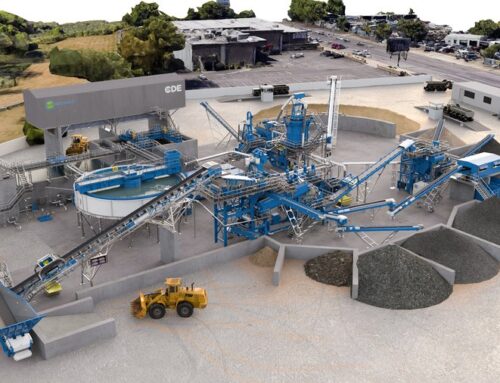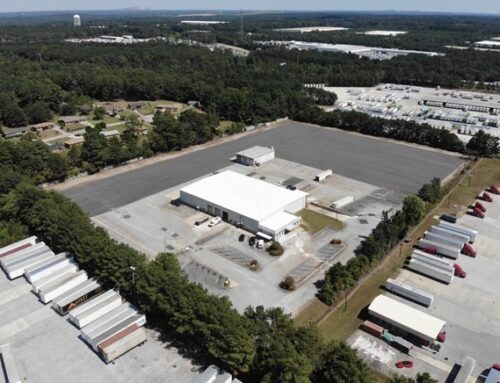Source Article – www.philly.com
Throughout his early 60s, Brad Buchner and his wife, Elizabeth, lived in the kind of house that many near-retirees dream of: a peaceful, manageable ranch-style property tucked in a quiet Poconos town surrounded by trees, lakes, and plentiful open space.
As it turns out, however, that’s exactly what Buchner and his wife don’t want as they think about the next years of their lives.
Three years ago, the Buchners packed their things and headed to Philadelphia, settling down in a Center City rental. As if ditching their longtime rural digs weren’t enough, the pair also abandoned spaciousness, swapping their three-bedroom, two-bathroom home for precisely 345 total square feet.
Brad Buchner traded a three-bedroom Poconos home for a 345-square-foot rental in Philadelphia.
The transition has meant parting ways with a fully finished basement and a home-office and adjusting to an oven-less kitchenette and two miniature refrigerators centered in one nearly square room. To fit in the furniture, TV, and shelving they need, the Buchners have jettisoned a full-sized bed, sleeping instead on three-inch memory foam mattresses placed atop two chairs and ottomans. To help store their possessions, command strips line the walls. And everyday furniture pieces such as dressers or bookshelves are now prominent objects in their new space.
Like thousands of Americans, the Buchners are part of the increasingly popular “tiny-home” movement. From millennials to baby boomers, and lower-income residents to wealthier ones, people have been enticed by a downsized home — and a downsized life. Call it the decluttering philosophy on steroids of cleaning guru Marie Kondo.
No standard definition of a tiny home exists, but generally, most describe it as a space ranging from 100 to 400 square feet. For those who have adopted the lifestyle, big living is out; living small, simple, and organized is supreme.
“We’re quite comfortable,” said Buchner, 65, who pays $925 a month, including utilities, for his apartment in the Arts Condominium building near 13th and Locust Streets. “When we were in our other home, we had two fireplaces, and we never lit them. We had a nice, sunken living room. But we spent most of our time sitting on our bed, working on our computers or watching our TV.”
“If one of us is having a bad day, yeah, it can get a little crowded,” Buchner continued. “But, really, we don’t find it stifling.”
With the lifestyle becoming popular and the cost of living in Philadelphia climbing, developers have embraced the tiny trend. Several hundred “micro-units” have been delivered to Philadelphia’s multifamily market in the last decade, offering smaller residential spaces complemented by full-amenity floors in apartment and condominium buildings.
In theory, developers and real estate agents say, renting or buying a micro-unit offers a cheaper alternative for people who want to live in prime locations in cities or inner-ring suburbs. Some have gone so far as to predict that micro-units could help solve America’s affordability crisis.
Yet as rents have climbed locally to unprecedented heights, renting or owning a micro-unit in Center City has become nearly as expensive as having a studio or one-bedroom in neighborhoods slightly farther out. (Compared with “micro-units,” studios typically range from 400 to 650 square feet.)
The spike in small living in Philadelphia recently has drawn some concern over whether too many developers are diving in too quickly. Many of the micro-units and studios have been aimed specifically at millennials, raising questions about whether future generations will want to occupy tiny spaces the same way that residents in their 20s and 30s currently do. To hedge their bets, the Urban Land Institute found, clever developers have been designing buildings with more flexibility, enabling them to convert side-by-side micro-units into one- or two-bedroom units, if the trend ultimately falls apart.
“There’s been a lot of new construction … and they’re building it for millennials,” Councilman Allan Domb, who runs a brokerage business, said this spring. “Part of that was that banks were not willing to lend on bigger-unit buildings — they knew developers were able to rent studios and one-bedrooms.”
Indeed, property managers say smaller residences recently have been outperforming two- and three-bedroom units, with the large units having more vacancies. When the Avenir apartments at 15th and Chestnut Streets — a renovation of a former office building by Alterra Property Group and the Scully Co. — opened in 2015, the building’s 60 micro-units were the fastest to lease, according to Jessica Scully, president of Scully.
“We looked at younger renters, what their needs and their lifestyles are, and how they expect to move more often, and how they don’t want to have as much stuff,” Scully said. By renting a micro-unit, she said, “they can start at a price point that you don’t necessarily find elsewhere in a nice doorman building.”
THE SCULLY COMPANY
In the Avenir’s micro-unit “flats,” which range in size from 314 to 327 square feet, developers Alterra Property Group and the Scully Company redeveloped the building with a lot of storage space in mind. Built-in closets and drawers, pictured here in a rendering, help reduce the amount of furniture that residents need. At just 388 square feet, Ben Silliman’s unit in the Arts Condominium building is smaller than a typical studio. Silliman, who lives in New York City, purchased this second home in Philly.
For developers, tiny units have made great economic sense: Compared with larger units, they can achieve greater rents per square foot. For example, at the Avenir, a micro-unit ranging from 314 to 327 square feet can cost $1,250 to $1,450 monthly — more than $4 a square foot for some of those units.
To make micro-units feel less cluttered, apartment buildings such as the Avenir and the Latham on 17th and Walnut Streets were designed to include more built-in closet and storage space. And by offering extensive amenity packages with services such as full-sized gyms, study rooms, and movie theaters, “it can feel like an extension of your apartment,” Scully said.
Twenty-six-year-old Ithi Joshi is one such renter living at the Avenir. A full-time graduate student pursuing a law degree, Joshi said her 329-square-foot-unit fit her lifestyle. She usually is at school or in the library, so renting a bigger space “didn’t make sense budget-wise.”
“I use the gym quite frequently, and once finals season comes around, I’m always up in the study rooms [on the amenity floor] with a few law school friends,” Joshi said. “I really appreciate having it. It’s actually nicer than going to a library or a coffee shop.”
For non-millennials, meanwhile, tiny homes have become good alternatives for those wanting second homes in other cities. Ben Silliman, 53, lives nearly full time in New York City, but in 2007, purchased a 388-square-foot condo in Philadelphia’s Arts Condominium building.
“It turned out to be a really great place for my spouse and me to have a weekend getaway,” said Silliman, a professor at St. John’s University in Queens. “And the funny thing is, my Manhattan apartment is much bigger than my space in Philadelphia.”
But tiny homes are not just limited to multi-family properties. Companies such as Escape Homes have emerged in recent years, developing tiny homes on wheels, offering micro-sized, almost RV-like single-family properties that can be transported virtually anywhere.
“We have shipped these homes to the sides of volcanoes in Hawaii and to remote mountaintops in Colorado. We’ve shipped them to the city of Miami and the Philadelphia area,” said Dan Dobrowolski, the owner of Escape Homes. “Our buildings are literally built like your house — it’s a normal bed, the toilet is full size, the shower is full size, the kitchen is full size if you want it that way.”
“The idea behind this is that we shouldn’t be such space hogs, and that things should be efficient,” Dobrowolski said. “The idea is that there should be a small carbon footprint. That more is not necessarily better.”





